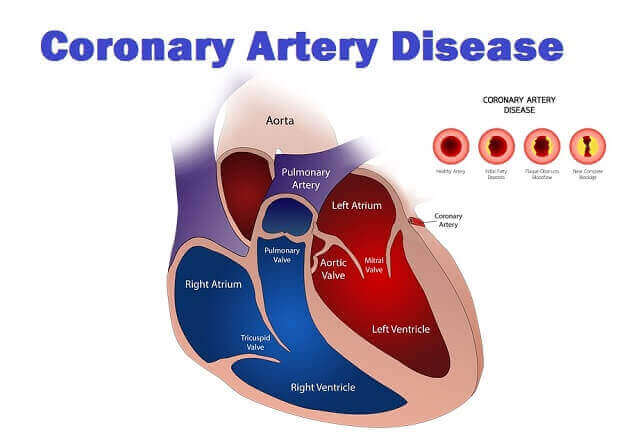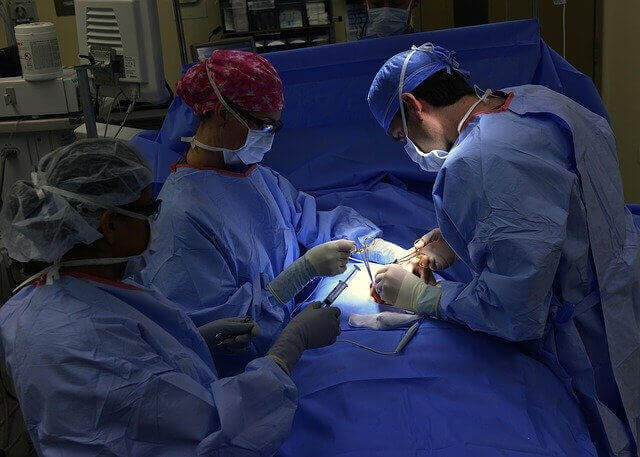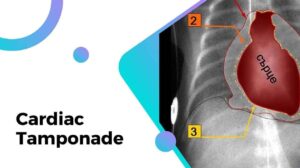
Coronary artery disease is one of the most common heart diseases. The disease refers to the narrowing or blockage of the arteries supplying blood to the heart. Arterial narrowing occurs due to the filling of fat deposits in the artery walls. This fat deposit is called plaque, stacking over many years and can eventually clog the blood flow to the heart muscle.
Coronary artery disease can cause chest pain and shortness of breath (angina) during physical work, or in conditions of stress, heart attack and heart failure.
Coronary artery disease causes
The most common cause of CAD is a vascular injury with the buildup of cholesterol plaque in the arteries, known as atherosclerosis. A reduced blood flow occurs when one or more of these arteries are partially or completely clogged.
The four primary coronary arteries located on the heart surface are:
- Right main coronary artery
- Left main coronary artery
- Left circumflex artery
- Left anterior descending artery.
These arteries carry nutrient-rich blood and oxygen to the heart, where the heart is responsible for pumping blood throughout the body. According to some research, a healthy heart drives about 3,000 gallons of blood throughout the body every day.
Like other organs or muscles, the heart should receive adequate blood supply. Reduced blood flow to your heart can cause CAD symptoms. Another rare cause of damage or blockage in the coronary artery also limits blood flow to the heart.
Coronary artery disease risk factors
There are several risk factors for CAD. Awareness about risk factors and efforts to curb them greatly reduces the risk.
- High cholesterol levels
- Tobacco use
- Smo**king
- Lack of physical exercise
- Unhealthy eating habits
- Pressure
- Excessive alco**hol consumption
- Obesity
- Diabetes
- Family history with heart-related disorders
- Kidney disorders
Coronary Artery Disease Symptoms
Coronary artery disease can appear in different symptoms and severity:
- Chest pain known as Angina, during physical work, and stress conditions.
- Cold Sweaty hands
- Cardiac arrest
- Nausea
- Palpitations
- Shortness of breath
- You may not experience any symptoms, although there is a restriction of blood flow to your heart (this is known as Silent Ischemia [painless ischemic).
Read also: Ischaemic Heart Disease: The Causes, Prevention, Symptoms, and When To See The Doctor
Coronary Artery Disease Process
The plaque begins to accumulate along the walls of blood vessels from a young age and continues to grow as the age progresses.
The plaque also makes your blood vessel wall sticky. In addition, inflammatory cells, lipoproteins, and calcium also stick to the plaque while walking through your bloodstream.
If these elements continue to accumulate, the coronary artery will narrow, so the new artery surrounding the blockage expands to get blood to flow into your heart muscle.
Worse, if you’re stressed, a new artery may not be able to carry that blood.
In some cases, when plaque rupture, blood clots can block blood supply to your heart muscle. It causes a heart attack.
If the blood vessels to your brain are clogged, usually by a blood clot, you can experience an ischemic stroke.
However, if it breaks, you may be able to experience hemorrhagic strokes. This is usually caused by high blood pressure.
Read more about Hemorrhagic Stroke Treatment + Symptoms
How is CAD diagnosed?
After paying attention to the associated symptoms, if you visit your doctor, he or she will take a detailed medical history of your Signs & symptoms, family history and risk factors. Then, he will perform a physical examination.
This will be followed by several diagnostic tests including:
- ECG (Electrocardiograph)
- Blood test
- TMT (Treadmill test)
If there is an indication of coronary artery disease from the above test, further tests will be conducted consisting of:
- Cardiac catheterization
- CT Scans
- MRI (Magnetic resonance imaging).
Handling and treatment of CAD
To cope with the CAD disorder, the first time to do is to overcome the acute symptoms of the patient, so that the patient’s condition becomes stable. Some of the steps you can take include:
Provide additional oxygen relief
When blood intake is interrupted due to impaired heart function, we strive to keep blood vessels that have adequate oxygen levels. Thus, additional oxygen aid plays an important role in supporting other vital organ functions.
Using medications
The primary drug that is administered to overcome chest pain is nitroglycerin, which serves to dilate the heart’s blood vessels, so that the blood flow to the heart muscle.
Other medications provided are usually aspirin to thin the blood and also the statins to lower cholesterol levels.
Medicines can still be continued to control the patient’s condition and prevent sudden cardiac arrest.
Surgery Action

Surgery does not have to be done when symptoms arise, but it can be done when the patient starts to diagnose having CAD. So it can also act as a precaution.
Surgery actions that can be done to cope with CAD are angioplasty, heart ring mounting, or bypass surgery actions.




